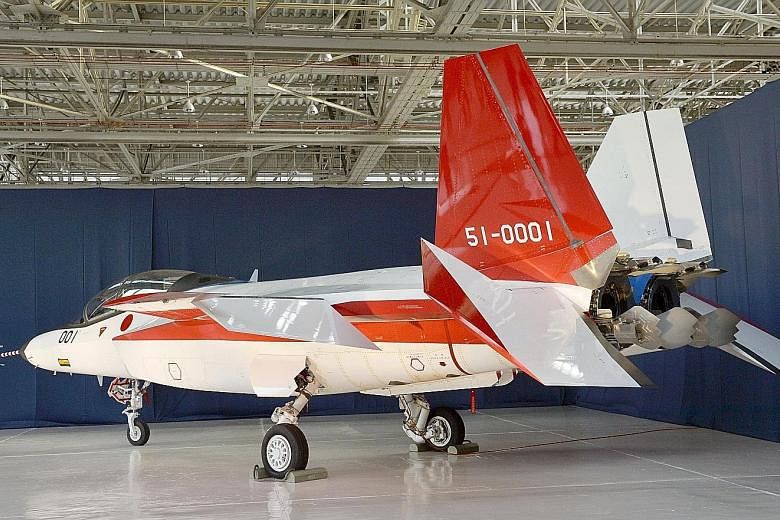TOKYO • Japan has opened talks with Western defence contractors about building a new generation of fighter jets, sources say, in what would mark an important milestone in Tokyo's strategy to maintain its air superiority over rival China.
The talks with defence companies including Boeing and Lockheed Martin come as Japan readies its ATD-X experimental aircraft for its first test flights within days.
Stealth fighter technologies being tested on the ATD-X, being developed by Mitsubishi Heavy Industries (MHI) and the Japanese Ministry of Defence's Technical Research and Development Institute, would be incorporated into the new fighter, dubbed the F-3, industry and government sources said this week.
"They have begun exploratory engagement to look at our capabilities," said a source with a Western defence contractor.
"There is no policy decision and no programme of record for the next fighter. There is only some discussion that, logically, there will be a fighter at some point."
Analysts estimate the cost of such a programme at US$40 billion (S$55 billion) or more, a price tag that could yet prove prohibitive.
Japan has already committed to buying 42 Lockheed Martin F-35 Joint Strike Fighters.
But that plane's perceived shortcomings in air-to-air combat and the US' refusal to sell its Lockheed Martin F-22 Raptor have encouraged Japan to consider a domestic- led programme to replace its fleet of ageing Boeing F-15J warplanes.
Plans are likely to be firmed by end-2017 or early 2018, which would enable the F-3 programme to secure funding in Japan's 2018- 2022 five-year plan and be in service by around 2030, the sources added. Upgrades to a large number of more than 150 ageing F-15Js could proceed while research into the F-3 programme continues, said the sources.
China's development of modern and stealthy fighter jets, combined with Japan's more muscular security agenda under Prime Minister Shinzo Abe, is fuelling Tokyo's push for a new fighter.
China is developing the fifth-generation fighter jet Chengdu J-20, which could go into service in five years, reported Japan Times.
Even though experts are sceptical of the capability of Chinese military assets, they say it is important for Japan to develop indigenous fighter jets with stealth capability.
"If China can develop really advanced stealth jets, China will have the air supremacy," said Mr Tetsuo Kotani, a senior fellow at the Japan Institute of International Affairs. "The F-35 can deal with the J-20, but we have to look beyond the J-20. It is about the competition for air supremacy."
As tensions between China and the United States and its allies rise in areas such as the East China Sea and South China Sea, Tokyo wants to ensure it can defend the airspace over Japan and its territories.
Japan recently lifted a decades- long ban on arms sales and while the F-3 programme is focused on domestic needs, exports of a home-grown fighter may also be considered. Any joint effort could be similar to Japan's F-2 programme, where Lockheed Martin teamed up with MHI to develop a fighter jet based its F-16.
High development costs meant Tokyo paid about US$120 million for each F-2, making it the second- most expensive fighter jet built after the F-22s at around US$150 million each. The basic F-35 model, by comparison, is expected to cost about US$85 million each once full production is reached.
Some analysts believe the cost of developing an aircraft with the performance level of an F-22 may be a hurdle too high even for the world's third largest economy.
"Paying for that performance difference by developing a new jet is simply too expensive. Where would Japan find US$40 billion or more in its defence budget to develop a new plane?" said Mr Richard Aboulafia, vice-president of analysis at Teal Group.
REUTERS

